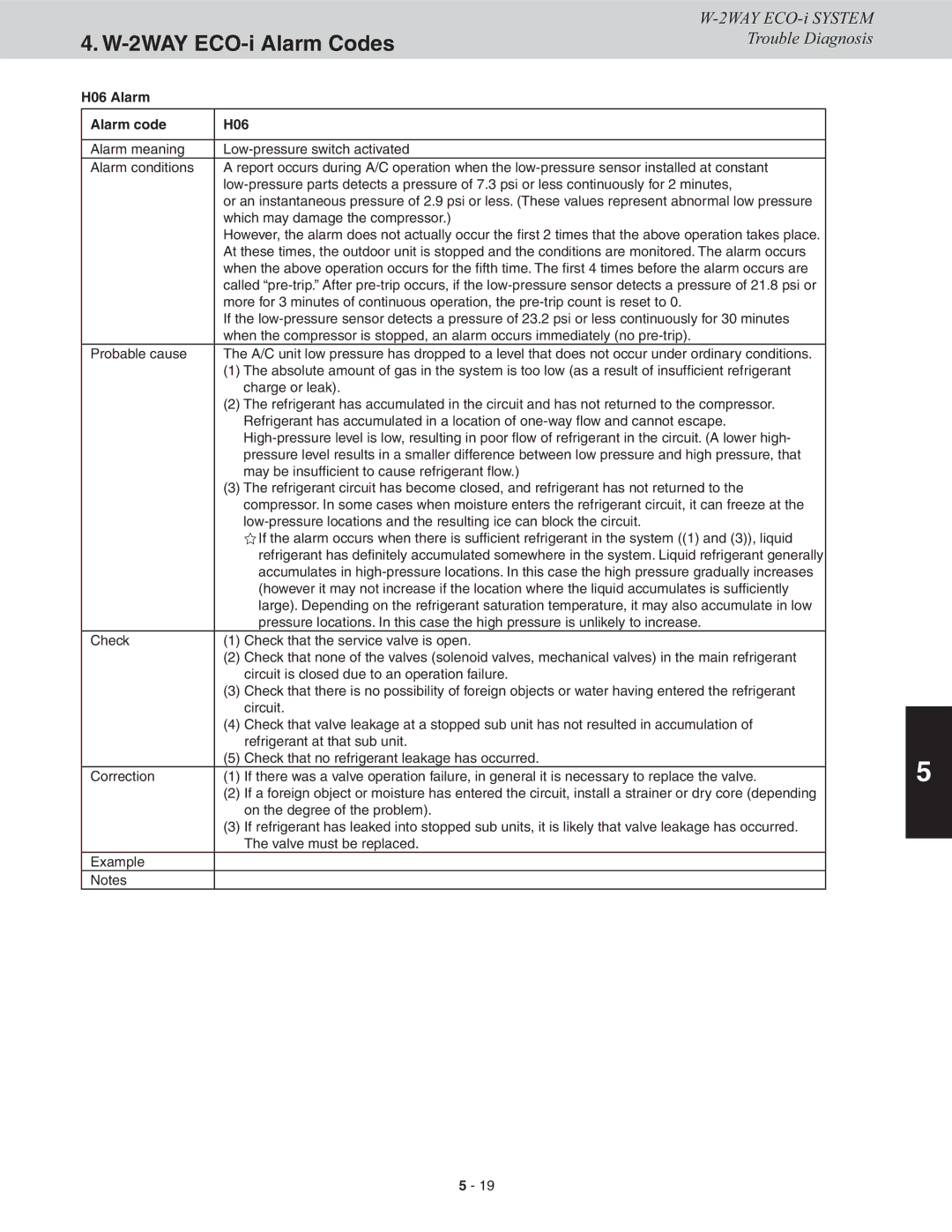
4. W-2WAY ECO-i Alarm Codes
H06 Alarm
Alarm code | H06 |
|
|
Alarm meaning | |
Alarm conditions | A report occurs during A/C operation when the |
| |
| or an instantaneous pressure of 2.9 psi or less. (These values represent abnormal low pressure |
| which may damage the compressor.) |
| However, the alarm does not actually occur the first 2 times that the above operation takes place. |
| At these times, the outdoor unit is stopped and the conditions are monitored. The alarm occurs |
| when the above operation occurs for the fifth time. The first 4 times before the alarm occurs are |
| called |
| more for 3 minutes of continuous operation, the |
| If the |
| when the compressor is stopped, an alarm occurs immediately (no |
Probable cause | The A/C unit low pressure has dropped to a level that does not occur under ordinary conditions. |
| (1) The absolute amount of gas in the system is too low (as a result of insufficient refrigerant |
| charge or leak). |
| (2) The refrigerant has accumulated in the circuit and has not returned to the compressor. |
| Refrigerant has accumulated in a location of |
| |
| pressure level results in a smaller difference between low pressure and high pressure, that |
| may be insufficient to cause refrigerant flow.) |
| (3) The refrigerant circuit has become closed, and refrigerant has not returned to the |
| compressor. In some cases when moisture enters the refrigerant circuit, it can freeze at the |
| |
| If the alarm occurs when there is sufficient refrigerant in the system ((1) and (3)), liquid |
| refrigerant has definitely accumulated somewhere in the system. Liquid refrigerant generally |
| accumulates in |
| (however it may not increase if the location where the liquid accumulates is sufficiently |
| large). Depending on the refrigerant saturation temperature, it may also accumulate in low |
| pressure locations. In this case the high pressure is unlikely to increase. |
Check | (1) Check that the service valve is open. |
| (2) Check that none of the valves (solenoid valves, mechanical valves) in the main refrigerant |
| circuit is closed due to an operation failure. |
| (3) Check that there is no possibility of foreign objects or water having entered the refrigerant |
| circuit. |
| (4) Check that valve leakage at a stopped sub unit has not resulted in accumulation of |
| refrigerant at that sub unit. |
| (5) Check that no refrigerant leakage has occurred. |
Correction | (1) If there was a valve operation failure, in general it is necessary to replace the valve. |
| (2) If a foreign object or moisture has entered the circuit, install a strainer or dry core (depending |
| on the degree of the problem). |
| (3) If refrigerant has leaked into stopped sub units, it is likely that valve leakage has occurred. |
| The valve must be replaced. |
Example |
|
Notes |
|
5
5 - 19
